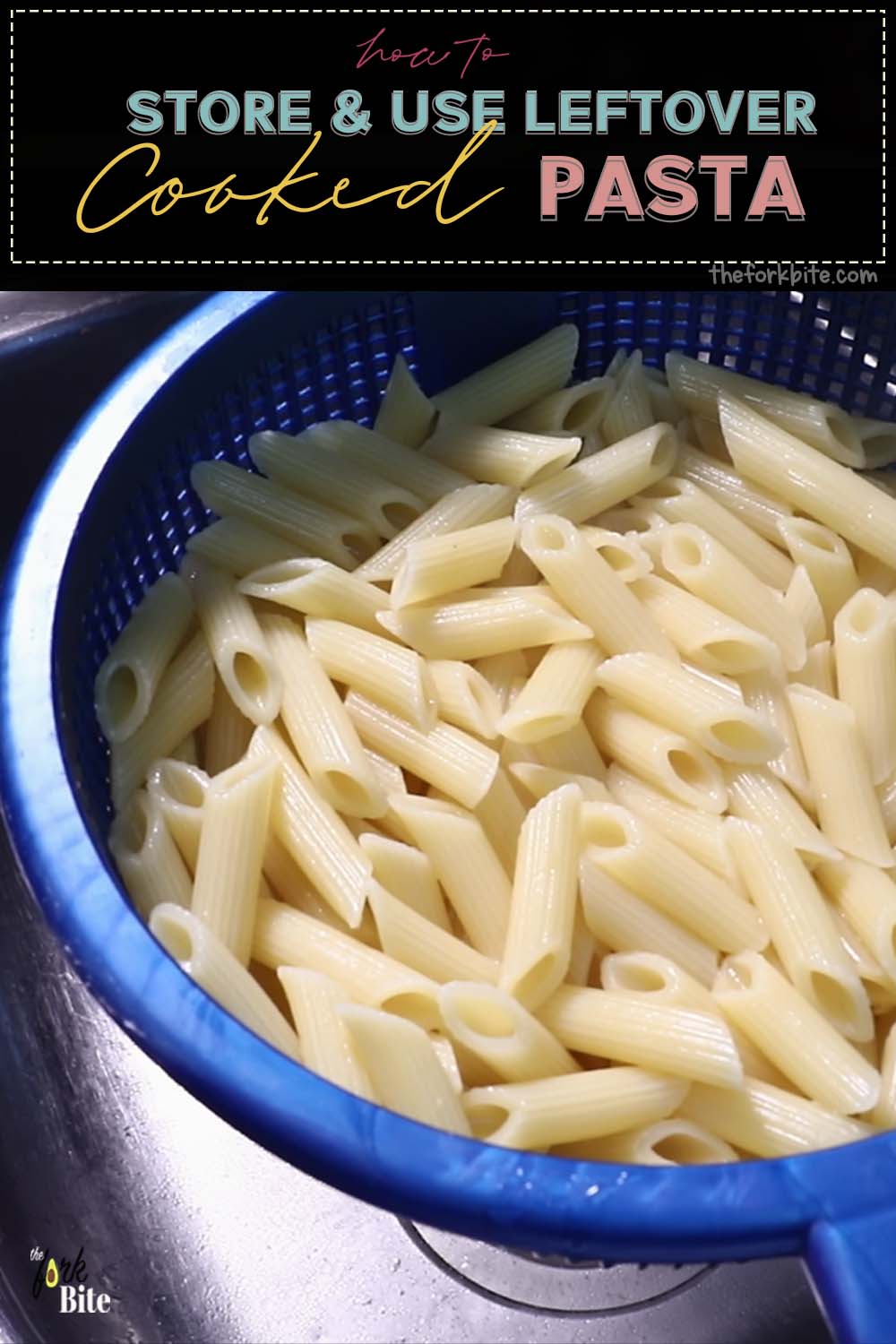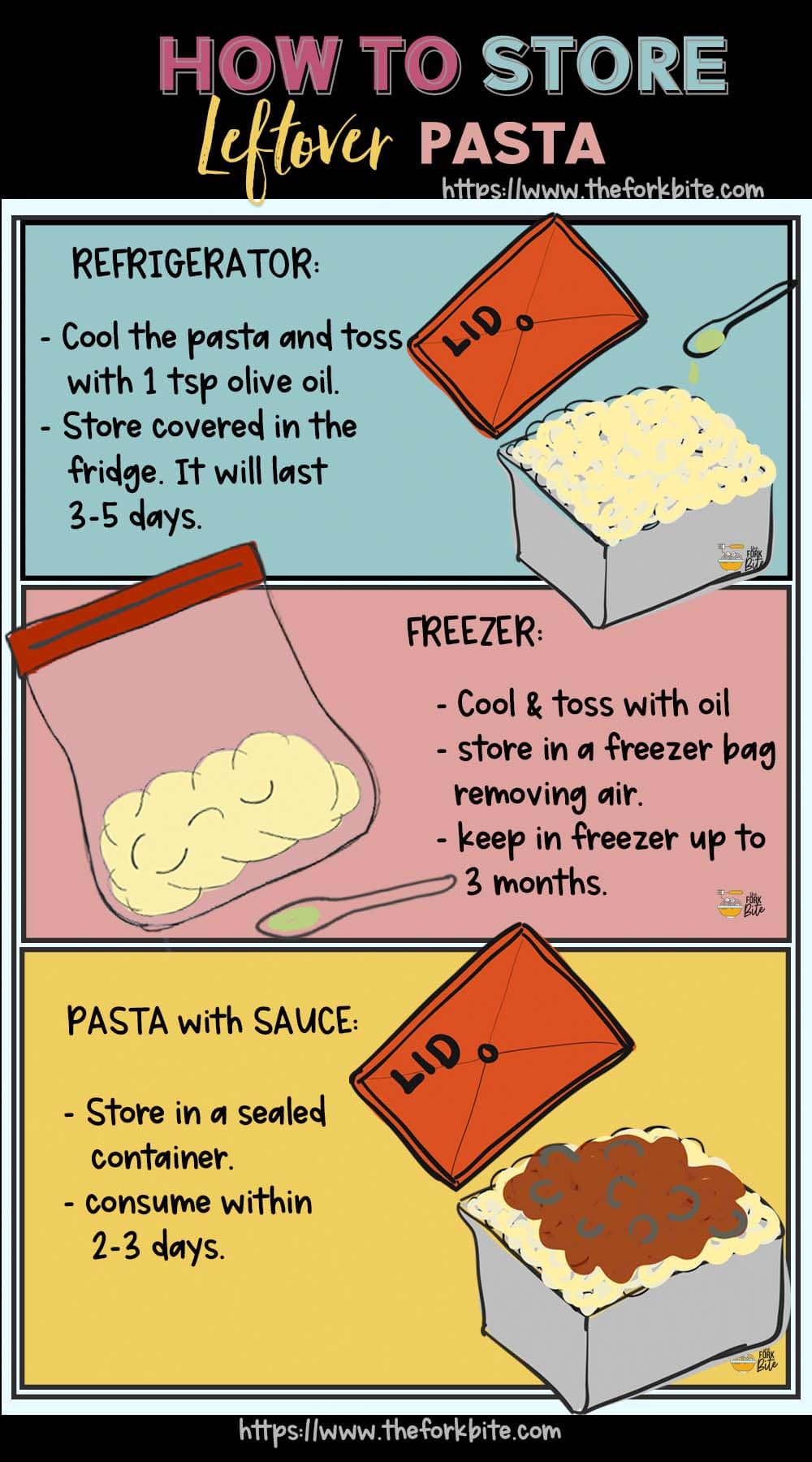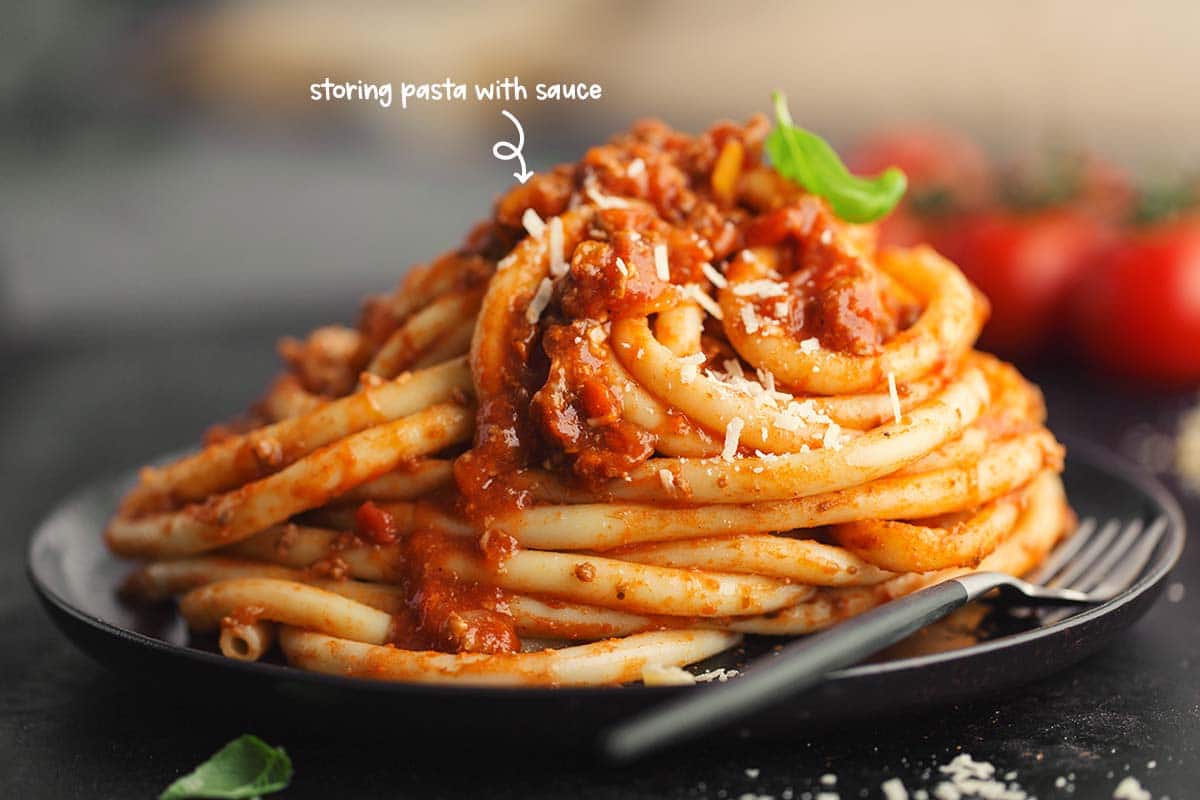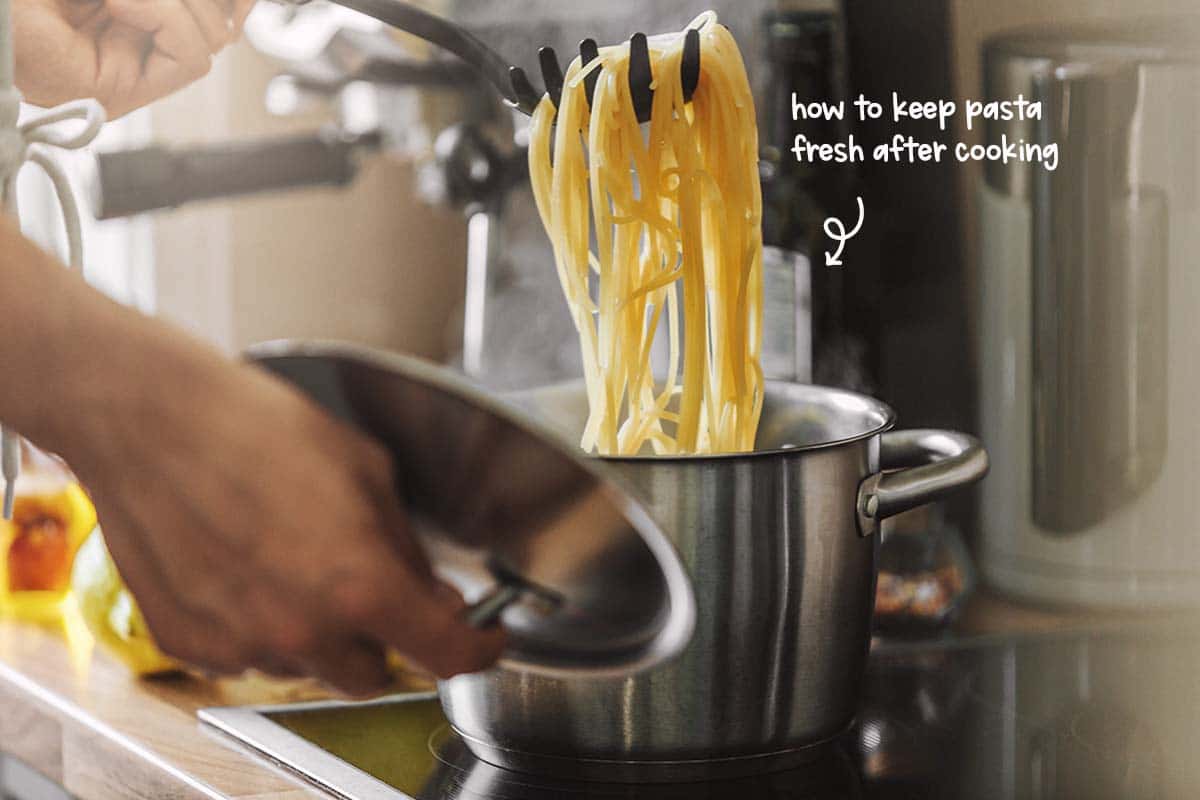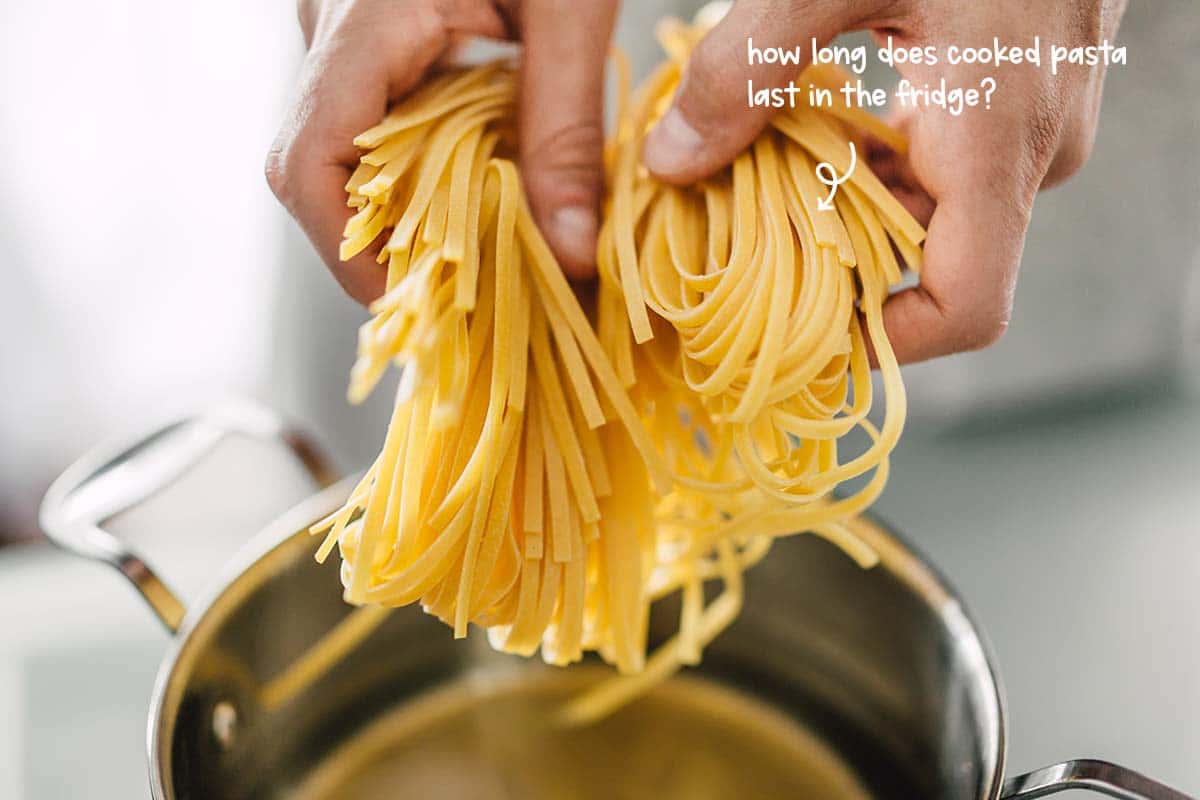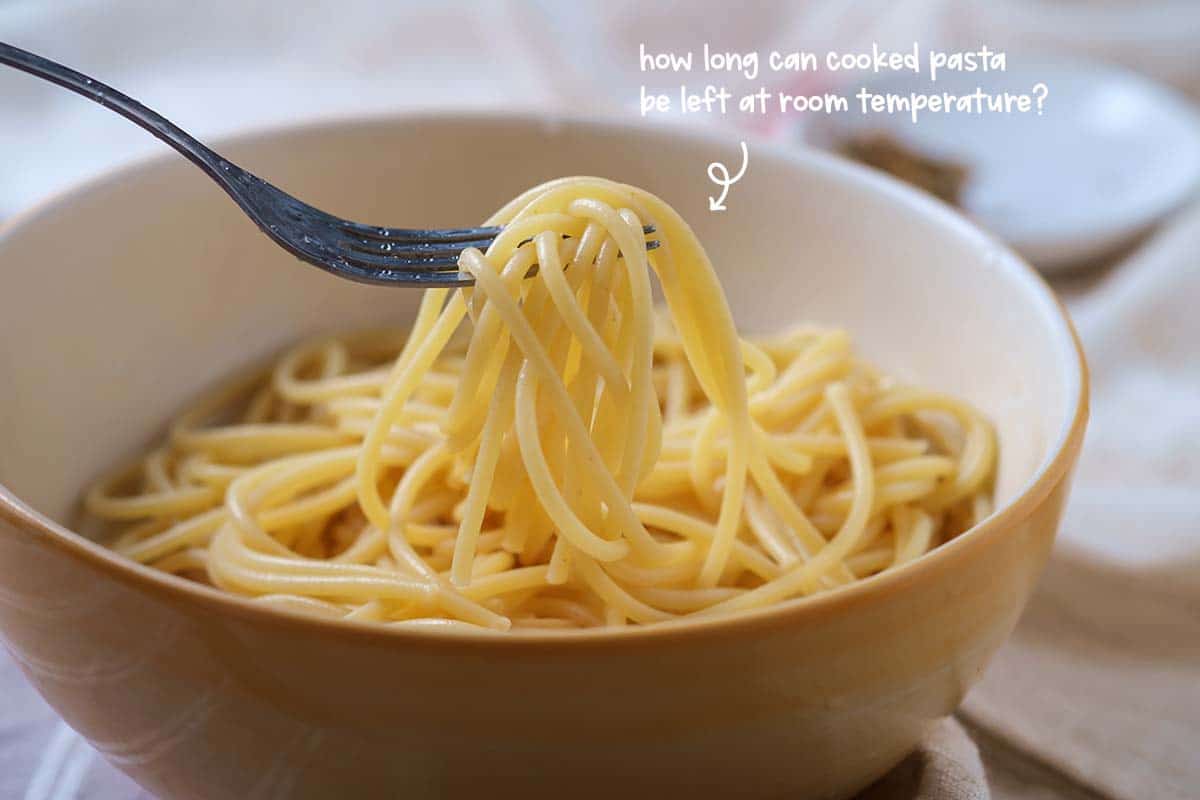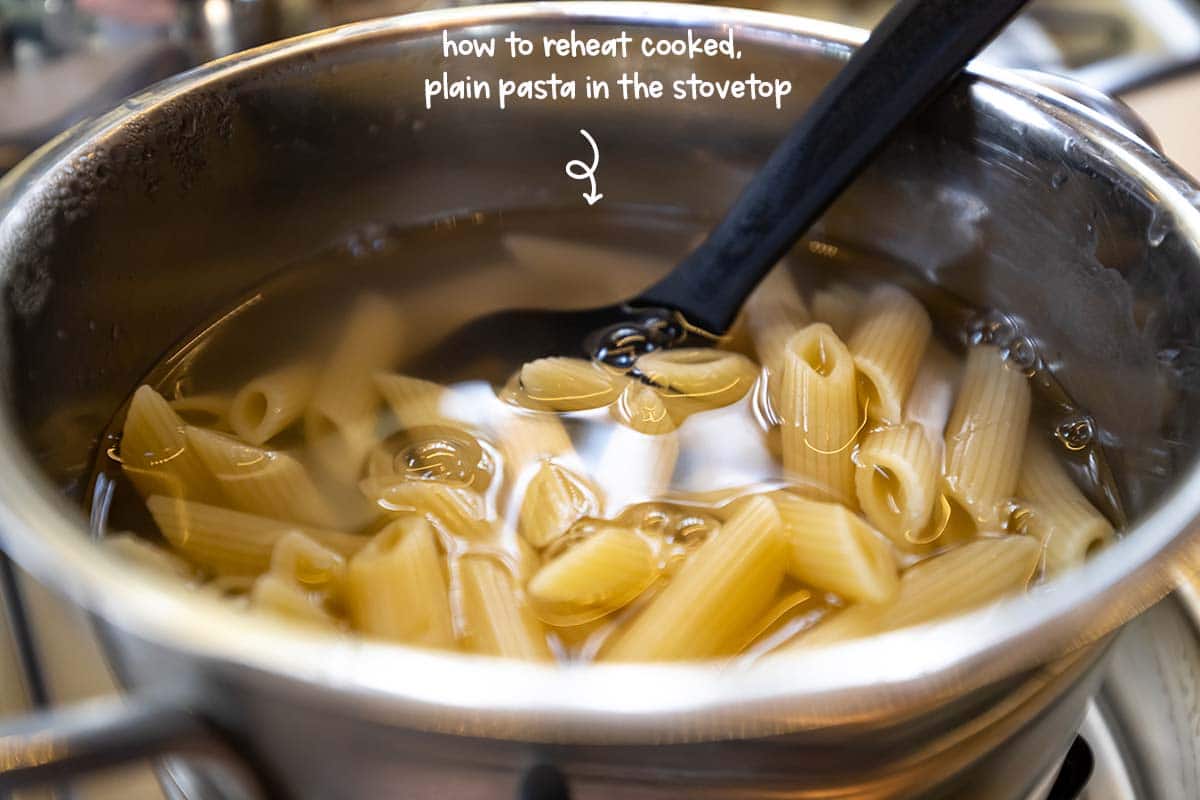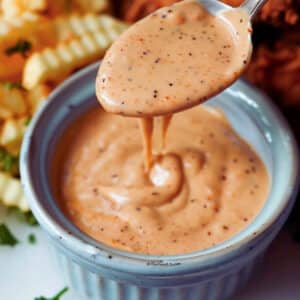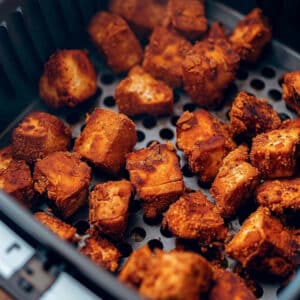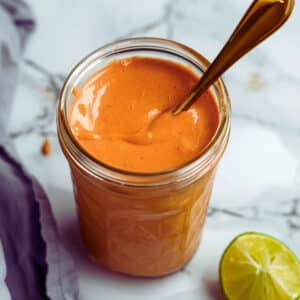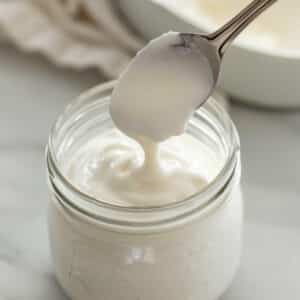If you adore pasta as much as I do, it hurts when you make too much and have to throw the leftovers away. I must have thrown away tons of the stuff over the years, but no more.
I learned the secret of how to store leftover cooked pasta, and it must be your lucky day because I am about to pass that secret onto you. I bet you have found the same thing as me. Unless you are using a recipe that calls for a whole box or pack of pasta, you end up making more than you can eat. If you then leave the leftover pasta for a little while, it bunches together in one stodgy clump.
Jump to:
There is a saying - "waste not, want not." In other words, don't throw anything away, and you won't find yourself wanting. With that in mind, I found a few ideas for keeping leftover cooked pasta so that I can use it again in various dishes another time.
These ideas work regardless of the type of pasta. It can be the large shell type, lasagne noodles, penne, or spaghetti. The bigger the pasta, the better these methods I am about to pass on to you will work.
For example, putting leftover pasta (with or without sauce) into the refrigerator or freezer will allow you to knock up a quick meal a week or even a month later - and it's so easy.
Storing Plain Pasta in the Fridge
Leaving leftover pasta too long before doing something with it is a big no-no. Leave it for any longer than about two hours, and it will start to deteriorate.
How to keep spaghetti noodles from sticking together?
I normally add olive oil into the water every time I cook some pasta, doing this keeps the noodles from clumping. Hence it will coat the noodles and prevent the noodles from sticking together.
Ideally, it would be best to do something with it as soon as you can after cooking it. It's no big deal. All that's needed is a container with a tight-fitting lid, a zip-lock bag, and a smidgen of butter or drizzle with some oil.
How to do it:
-
-
- When you have finished cooking the pasta, drain the water then rinse it thoroughly under the cold water faucet to wash away the stickiness.
- Put three teaspoons of olive oil, or add a small quantity of butter if you prefer, into a container or a zip-lock bag. Put any leftover pasta into the container/bag, close the lid or zip-up the bag, and give the content a good shake to coat each piece of pasta with the oil/butter.
- Make sure the container or bag is sealed correctly.
Label with the date and the name of the contents. It will aid you later in terms of checking the expiry date. - Put into your refrigerator.
-
What oil to use?
You can use whichever type of oil you prefer. Olive oil is excellent if it goes with the dish you made. If it is plain pasta and you are uncertain what you might want to use it for in the future, choose something with a more neutral flavor, like canola or vegetable oil.
-
- One or two teaspoons of oil or butter (according to the quantity of pasta) should be ample.
- When working with warm pasta, it is best to leave it to cool down before closing the container or bag. Make sure the seal is as airtight as possible.
- If it is not, and the air gets in, the moisture in the pasta will create an ideal environment in which bacteria and mold will flourish.
- If you are using a zip-lock bag instead of a container, don't forget to squeeze as much air as possible before you seal it.
- If you store cooked pasta in a refrigerator, it should keep for between three and five days. Any longer and its flavor will begin to dissipate. Not only that, but there will also be a higher likelihood of mold taking hold.
Storing Plain Pasta in the Freezer
Can you freeze pasta? If you want to store pasta for more than three to five days, you can freeze it. For people with busy schedules and little time for cooking, it can be a great time saver.
Sometimes, people are under the impression that they have to eat every last scrap to make sure there isn't any pasta leftover after a meal. Well, now they can think again.
Quick note:
I should mention that food that soaks up water when its cooking can be frozen. However, boiled pasta spoils easily, and its flavor might not be as good as it was.
When cooked pasta is frozen, it will keep for up to about three months or so. However, if you eat it within two months, the flavor will be significantly fresher than if you keep it frozen for longer.
Food with higher water content, as pasta does, is more susceptible to freezer burn if stored for too long. Before recooking frozen pasta, you should put it in the refrigerator for a few hours to completely thaw out.
Tips when freezing pasta
-
- When you cook pasta which you might later be freezing, do not overcook it. Cook it al dente. You should do this because when you then reheat it, the method you will use will not cook the rice again, it will merely heat it through.
- If you didn't cook it right initially, recooking it may only ruin it.
- I wouldn't advise you to use gluten-free pasta. For whatever reason, it is not the best for freezing.
- To prevent the pasta from clumping together, add a little olive oil. Also, as I mentioned earlier, remove as much air as possible from the zip-lock bag before sealing it.
- Divide the pasta into a container or zip-lock bag into portion sizes that you are likely to eat. You cannot refreeze leftover pasta again as defrosting and reheating will spoil it.
- The best method to use when reheating pasta is to steam it. Don't microwave it. If you do, you will dry the pasta up, and it won't be nice to eat. Steaming, on the other hand, retains the moisture.
- If you must use the microwave, make sure that the pasta only comes halfway up the sides of the container and that it is the same depth all over. That way, it will cook evenly.
- If you are also freezing any leftover pasta sauce, freeze it separately from the pasta in ice cube stacks.
Storing Pasta With Sauce
-
- If you want to keep cooked pasta and the sauce you made for it, you can store them mixed or separately in your fridge or freezer.
- Storing them separately, as two items instead of as one mixed item, allows you much more flexibility. You can reheat the pasta with the sauce you already made, or you can make a new one or a different one.
- The fact of the matter is that if you store them mixed, the pasta will get mushy after a while. But if you are planning to eat it within a day or two, storing it mixed is okay.
- It allows the sauce to permeate through the pasta, making it even tastier. If you are going to do this, make sure to keep it in an airtight container or a bag you took as much air out of as possible.
Using Leftover Pasta
If you are making a pasta salad or frittata that requires cold or cooled pasta, you can use the pasta you stored straight from the refrigerator without any problem.
-
- If the recipe calls for warm noodles, you can drop them into a pan of rapidly boiling water for between 30 and 60 seconds. Just to heat them through properly.
- If you leave pre-cooked pasta in boiling water for any longer, you will overcook it.
- Any sauce should be reheated on its own and then combined with the hot pasta just as when you originally cooked and served it.
- When you reheat pasta mixed with sauce, the best way to do it is in an oven. Preheat the oven to 350°F, pop the dish in, and cook for 20 minutes.
- Ensure that the dish is covered with aluminum foil to keep the moisture in and stop the pasta from going dry.
- Another way of warming up pasta in the sauce is in the stovetop. It's essential to stir it frequently, however, to prevent it from sticking to the bottom of the pan.
- A further possibility is a microwave. The only problem is that sometimes microwaving causes it to reheat unevenly, and it can also impair the flavor.
How to keep pasta fresh after cooking
Getting the timing right is a bit of an art when it comes to cooking a meal. Pasta can be particular;y problematic because it tends to overcook, making it dry easily.
Getting the pasta cooking spot on is the best plan, but if you find it challenging, especially when preparing other things at the same time, it is possible to keep it hot so that it is still fresh when you come to serve up.
-
- If the pasta is ready too early, drain it, and while doing so, pour around one half of the cooking water into another pan.
- Put the pasta under the cold water tap and rinse thoroughly to cool it and prevent it from cooking. Add a little olive oil and toss well to stop it from clumping.
- Put the colander over the pan so that the pasta in it sits above the hot water, and cover to keep in the heat.
- Put a large bowl into your oven and gently warm. Drain the water off, and re-rinse the pasta again. Add olive oil and toss. Pour the pasta into your pre-warmed bowl and cover with aluminum foil.
- When preparing pasta for a buffet, take one third off the cooking time advised on the instructions printed on the packaging. Add a liberal amount of olive oil, toss and place into your chafing dish.
Extra Tip:
The more sturdy the pasta, the longer it will keep, so, for example, plan your buffet around penne pasta instead of angel hair. Sturdier pasta keeps longer than delicate types, so plan a buffet around penne rather than angel hair.
Warning:
You need to keep pasta at a temperature of 140°F to stop the development of any bacteria. Anything left standing after two hours at a lesser temperature should be thrown away.
How long does cooked pasta last in the fridge?
For how long will cooked pasta remain good? The precise answer is mostly dependent on how it is stored. If you are going to refrigerate it, this should be done within two hours of cooking.
-
- To elongate the shelf like cooked pasta, and for quality and safety, put cooked pasta into a shallow airtight container or a zip lock back before placing in the fridge.
- When correctly stored, you can refrigerate cooked pasta for between three and five days. Research carried out by EATBYDATE suggests that cooked pasta can be kept in a fridge for up to one week.
- The majority of shop-bought sauces for pasta do not carry expiry dates. I suggest you use it within four days of being refrigerated.
- If possible, keep the pasta and the sauce separate from one another. If you store and mix the sauce and the sauce is strongly spiced, it can hasten the pasta's deterioration. Also, the pasta will absorb the sauce's aroma and taste.
How long can cooked pasta be left at room temperature?
Discard cooked pasta after it's been kept at room temperature for longer than two hours. The reason for this is that bacteria will proliferate with ease between 40 °F and 140 °F.
To prolong the shelf life of cooked pasta, you can freeze it. First, put it into an airtight container of a heavy freezer bag.
It's best to freeze cooked pasta mixed with its sauce. Freezing dry, cooked, pasta can result in it becoming somewhat mushy when it is defrosted.
How long does cooked pasta last in the freezer?
If you store cooked pasta properly, It will keep its quality for between one and two months. You can freeze it beyond this time, and it will still be safe to eat.
The time indicated above is for the best quality. But please note that to remain safe for an indefinite time, cooked pasta must be kept at a continuous 0°F.
How long does cooked pasta last after being frozen and thawed?
Once thawed, cooked pasta can be kept in the fridge for up to three to four days. If, however, it is defrosted in a microwave, it should be eaten straight away.
How to tell if cooked pasta is bad?
When cooked pasta develops an odd flavor or odor, or mold begins to appear, it should be thrown away. Don't be tempted to taste it first.
How to reheat cooked plain pasta
Pasta, whether plain or mixed with sauce, can be microwaved, heated in a conventional oven, or on top of a stove. But the best method to use will depend on how much pasta, and, or what the pasta dish is, you intend to reheat.
Quick note: Plain pasta (without any sauce covering) will not reheat in an oven very well because it doesn't have any sauce or alternative ingredients that might help to stop it from drying out.
#1) Stovetop:
-
- If you decide to reheat cooked plain pasta on your stovetop, pour enough water to cover the pasta and bring it to a boil, add some salt.
- When the water starts to boil, tip in the leftover pasta.
- Bring back to the boil and carry on boiling the pasta for between 30 to 60 seconds. After 30 seconds, check to see if it is heated through properly. If not, keep boiling and check every 15 seconds until it is reheated to your satisfaction. Try not to overcook it.
- Drain off the water and serve - plain if that's the way you want it or add it to a sauce or some other dish.
#2) Microwave:
-
- Place the leftover pasta either on a plate or a microwave-safe dish and cover it with plastic wrap. Be sure to leave one corner uncovered so that any steam can escape.
- Reheat on a medium power setting (to stop from overcooking) and warm through for one to one and a half minutes. If your microwave isn't fitted with a turntable, stop halfway through the cooking time, turn the dish manually, and continue to cook.
- After the microwave pings, test the pasta to check that it is warmed through properly. If it is not evenly heated to your satisfaction, continue to cook for a further 15 seconds at a time, cooking and checking until you are happy.
- Once heated to your satisfaction, remove from the microwave and take the plastic wrap off with care to ensure you don't get scalded by any escaping hot steam.
- Your pasta can now be served up plain, as it is, or you can add it to a sauce of your choice, or another dish altogether.
#3) Oven:
When you've got a lot of leftover pasta, reheating in the oven is probably your best bet when you add some milk to keep it moist.
-
- Preheat your oven to around 175°F.
- Put the leftover pasta into a shallow depth baking dish and spread evenly, so it is nice and uniformly flat. Add a little milk (if reheating plain pasta) or sauce to keep in any moisture.
- Cover with aluminum foil to help to keep the moisture contained and put into the oven for around 12 to 15 minutes.
- If you want to, add some cheese (parmesan or similar) and put back into the oven.
How to reheat sauced and baked pasta dishes?
Pasta mixed with sauce, and baked pasta, can be reheated in the oven, or microwave, or on your stovetop. You can read my creamy, cheesy spaghetti recipe here.
Quick note:
If reheating pasta on a stovetop, it is best if it is ready mixed with sauce inside a heatproof plastic bag.
Using stovetop:
-
- Boil a panful of water - enough to accept the bagged pasta. Lower the heatproof bag of pasta into the boiling water carefully.
- Before you immerse the bag, make sure it is completely sealed.
Leave the bag in the boiling water for about one minute or so until it is heated through. (The exact cooking time will be dependent on how much pasta you are cooking and what type of pasta it is). - After a minute, check to see if it is properly heated through and, if not, continue to boil, checking every 15 to 30 seconds to know when it is ready. Try not to overcook.
- Once you are satisfied that it is cooked to your taste, pour the pasta out of the bag and serve up.
Using Microwave:
Another way of reheating pasta mixed with sauce, or baked pasta, is in a microwave.
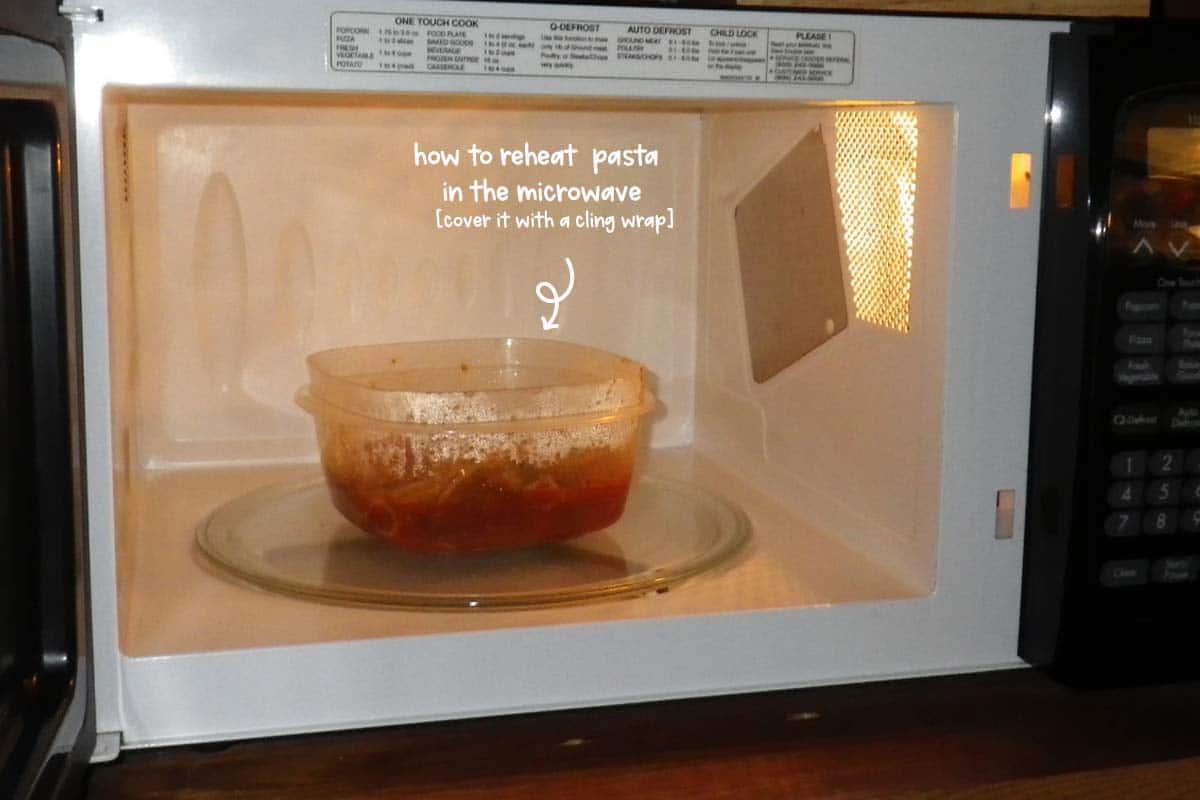
-
- Place the leftover pasta either on a plate or a microwave-safe dish and cover it with plastic wrap. Be sure to leave one corner uncovered so that any steam can escape.
- Reheat on a medium power setting (to stop from overcooking) and warm through for one to one and a half minutes. If your microwave isn't fitted with a turntable, stop halfway through the cooking time, turn the dish manually, and continue to cook.
- If there is any leftover sauce you want to use up, pour it over the pasta before microwaving to stop the pasta from drying out.
- After the cooking cycle finishes, test the pasta to check that it is warmed through properly. If it is not evenly heated to your satisfaction, continue to cook for a further 15 seconds at a time, cooking and checking until you are happy.
- Once heated to your satisfaction, remove from the microwave and take the plastic wrap off with care to ensure you don't get scalded by any escaping hot steam.
Using Oven:
-
- Put the leftover sauced or baked pasta into an ovenproof dish.
- If the dish has a lid, put it in position if it doesn't have a lid, close by placing aluminum foil tightly in position across the top of the dish to keep in any moisture.
- Preheat the oven to a temperature of 325°F, and put the dish inside.
- Cook for 20 minutes, checking before serving to ensure the dish is properly heated through.
How to check the readiness?
To ascertain whether or not the dish is ready to serve, prod the tip of a knife, or a fork, into the middle of the pasta. Take it out and touch the tip. If the tip is hot, the pasta is ready. If not, put it back into the oven.
Continue to cook and check at ten-minute intervals. The time it needs to warm through thoroughly will be dependent on the quantity and the type of pasta or pasta dish. Once it is heated through to your satisfaction, you can serve.
A quick tip:
To prevent it from becoming too dried out, be sure not to use too high a heat, cover the pasta tightly, and do not cook any longer than necessary to heat it thoroughly.
Useful tips on reheating
-
- It is preferable to microwave leftover pasta, one servings-worth at a time. It is much more effective than attempting to reheat several servings at once. When you do them one at a time, you will find that each potion will be adequately and evenly warmed through.
- Don't microwave leftover pasta in a four-cornered baking dish. The pasta in the corners will tend to overcook. Use a round or oval dish instead. The pasta will warm through more evenly.
- If you need to reheat lasagna in an oven, prick some little holes in the top, pour on a bit of milk, and cover tightly with aluminum foil.
- Put it into the oven at 350°F for between to 25 minutes until the cheese melts and bubbles. The milk helps to keep the whole thing moist.

